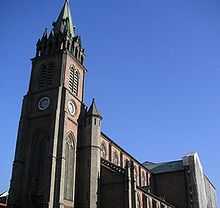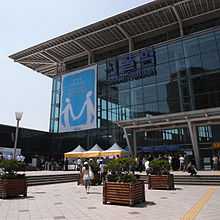Seoul
| Seoul 서울특별시 | |||
|---|---|---|---|
| Special City | |||
| 서울특별시 · Seoul Special City | |||
| transcription(s) | |||
| • Hangul | 서울특별시 | ||
| • Hanja | 서울특별시特別市[1] | ||
| • Revised Romanization | Seoul Teukbyeolsi | ||
| • McCune–Reischauer | Sŏul T'ŭkpyŏlsi | ||
 | |||
| |||
| Nickname(s): 서울특별시 | |||
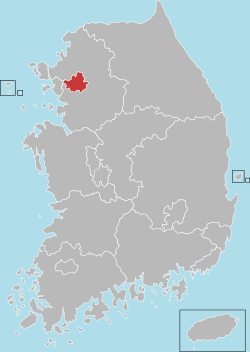 | |||
| Coordinates: 37°33′59.53″N 126°58′40.69″E / 37.5665361°N 126.9779694°ECoordinates: 37°33′59.53″N 126°58′40.69″E / 37.5665361°N 126.9779694°E | |||
| Country |
| ||
| Region | Seoul National Capital Area | ||
| Districts |
25
| ||
| Government | |||
| • Type |
Seoul Metropolitan Government Mayor-Council | ||
| • Mayor | Park Won-soon (DP) | ||
| • Council | Seoul Metropolitan Council | ||
| • National Representation - National Assembly |
48 / 300 48 / 246 List
| ||
| Area[2] | |||
| • Special City | 605.21 km2 (233.67 sq mi) | ||
| Population (December 31, 2012[3]) | |||
| • Special City | 10,442,426 | ||
| • Density | 17,000/km2 (45,000/sq mi) | ||
| • Metro | 25,620,000 | ||
| • Demonym | 서울시민(Seoul-simin), Seoulite | ||
| • Dialect | Seoul | ||
| Bird | Korean Magpie | ||
| Color | Seoul Red[4] | ||
| Flower | Forsythia | ||
| Font | Seoul fonts(Han River and (Namsan (Seoul) | ||
| Mascot | Haechi | ||
| Slogan | “함께 만드는 서울, 함께 누리는 서울”(Literally "Seoul We Create Together, Seoul We Enjoy Together") | ||
| Song | "서울의 빛"("The Lights of Seoul") - BoA | ||
| Tree | Ginkgo | ||
| Website | seoul.go.kr | ||
Seoul (English pronunciation: /soʊl/; Korean: [sʌ.ul] (![]() ) — officially the Seoul Special City — is the capital and largest metropolis of South Korea. A megacity with a population of more than 10 million, it is the largest city proper in the developed world.[5] The Seoul Capital Area, which includes the surrounding Incheon metropolis and Gyeonggi province, is the world's second largest metropolitan area with over 25.6 million people,[6] home to over half of South Koreans along with 632,000 international residents.[7]
) — officially the Seoul Special City — is the capital and largest metropolis of South Korea. A megacity with a population of more than 10 million, it is the largest city proper in the developed world.[5] The Seoul Capital Area, which includes the surrounding Incheon metropolis and Gyeonggi province, is the world's second largest metropolitan area with over 25.6 million people,[6] home to over half of South Koreans along with 632,000 international residents.[7]
Situated on the Han River, Seoul's history stretches back more than 2,000 years when it was founded in 18 BCE by Baekje, one of the Three Kingdoms of Korea. It continued as the capital of Korea under the Joseon Dynasty and the Korean Empire. The Seoul metropolitan area contains four UNESCO World Heritage Sites: Changdeok Palace, Hwaseong Fortress, Jongmyo Shrine and the Royal Tombs of the Joseon Dynasty.[8] Seoul is surrounded by mountains, the tallest being Mt. Bukhan, the world's most visited national park per square foot.[9] Modern landmarks include the iconic N Seoul Tower, Lotte World, the world's second largest indoor theme park,[10] and Moonlight Rainbow Fountain, the world's longest bridge fountain.[11] The birthplace of K-pop and the Korean Wave, Seoul was voted the world's most wanted travel destination by Chinese, Japanese and Thai tourists for three consecutive years in 2009–2011[12] with over 10 million international visitors in 2012.[13]
Today, Seoul is considered a leading and rapidly rising global city, resulting from an economic boom and growth known as the Miracle on the Han River which transformed it from the ashes of the Korean War to the world's fourth largest metropolitan economy with a GDP of US$773.9 billion[14] in 2012 after Tokyo, New York City and Los Angeles.[15] A world leading technology hub,[16] it boasts the world's sixth largest[17] number of Fortune Global 500 multinationals such as Samsung, the world's largest technology company, as well as LG, SK, and Hyundai-Kia. Gangnam is the commercial center along with Yeoui Island forming the financial center and Digital Media City being the technology hub. Jongno and Central District are the historical and cultural center of Seoul. Ranked sixth in the Global Power City Index, the metropolis exerts a major influence among global affairs as one of the five leading hosts of global conferences.[18]
Seoul has a very technologically advanced infrastructure.[19][20] It has the world's highest fibre-optic broadband penetration, resulting in the world's fastest internet connections with speeds up to 1 Gbps.[21][22] Seoul Station is the main terminal of the KTX high-speed rail and the Seoul Subway is the world's largest subway network by length,[23] considered the world's best subway by Jalopnik[24] featuring 4G LTE, WiFi, DMB and WiBro. Seoul is connected via AREX to Incheon International Airport, rated the world's best airport seven years in a row (2005–2012) by Airports Council International.[25] Lotte World Tower, a 556m (1,824 ft) supertall skyscraper is under construction in Seoul to become the OECD's tallest in 2015 with the world's tallest observation deck on its 123rd floor.[26]
Seoul hosted the 1986 Asian Games, 1988 Summer Olympics, 2002 FIFA World Cup and the 2010 G-20 Seoul summit. A UNESCO City of Design, Seoul was named the 2010 World Design Capital.
Etymology
The city has been known in the past by the names Wirye-seong (위례성; 慰禮城, Baekje era), Hanju (한주; 漢州, Silla era), Namgyeong (남경; 南京, Goryeo era), Hanseong (한성; 漢城, Baekje and Joseon era), Hanyang (한양; 漢陽, Joseon era), Gyeongseong (경성; 京城, colonial era).[27] Its current name originated from the Korean word meaning "capital city," which is believed to be derived from the word Seorabeol (서라벌; 徐羅伐), which originally referred to Gyeongju, the capital of Silla.[28]
Unlike most place names in Korea, "Seoul" has no corresponding hanja (Chinese characters used in the Korean language). On January 18, 2005, Seoul government officially changed its official Chinese language name to Shou'er (simplified Chinese: 首尔; traditional Chinese: 首爾; pinyin: shǒu'ěr) from the historic Hanseong (simplified Chinese: 汉城; traditional Chinese: 漢城; pinyin: hànchéng), whose use is still common though.[29][30][31]
History

Settlement of the Han River area, where present-day Seoul is located, began around 4000 BC.[32]
Seoul is first recorded as Wiryeseong, the capital of Baekje (dounded in 18 BC) in the northeastern Seoul area.[32] There are several city walls remaining in the area that date from this time. Pungnaptoseong, an earthen wall just outside Seoul, is widely believed to have been at the main Wiryeseong site.[33] As the Three Kingdoms competed for this strategic region, control passed from Baekje to Goguryeo in the 5th century, and from Goguryeo to Silla in the 6th century.
In the 11th century Goryeo, which succeeded Unified Silla, built a summer palace in Seoul, which was referred to as the "Southern Capital". It was only from this period that Seoul became a larger settlement.[32]
When Joseon replaced Goryeo, the capital was moved to Seoul (also known as Hanyang and later as Hanseong), where it remained until the fall of the dynasty. The Gyeongbok Palace, built in the 14th century, served as the royal residence until 1592. The other large palace, Changdeokgung, constructed in 1405, served as the main royal palace from 1611 to 1872.[32]
Originally, the city was entirely surrounded by a massive circular stone wall to provide its citizens security from wild animals, thieves and attacks. The city has grown beyond those walls and although the wall no longer stands (except along Bugaksan Mountain (북악산), north of the downtown area[34]), the gates remain near the downtown district of Seoul, including most notably Sungnyemun (commonly known as Namdaemun) and Honginjimun (commonly known as Dongdaemun).[35] During the Joseon dynasty, the gates were opened and closed each day, accompanied by the ringing of large bells at the Bosingak belfry.[36]
_Korea_-_Gates_of_Seoul.png)
In the late 19th century, after hundreds of years of isolation, Seoul opened its gates to foreigners and began to modernize. Seoul became the first city in East Asia to introduce electricity in the royal palace, built by the Edison Illuminating Company[37] and a decade later Seoul also implemented electrical street lights.[38]
Much of the development was due to trade with foreign countries like France and United States. For example, the Seoul Electric Company, Seoul Electric Trolley Company, and Seoul Fresh Spring Water Company were all joint Korean-American owned enterprises.[39] In 1904, an American by the name of Angus Hamilton visited the city and said, "The streets of Seoul are magnificent, spacious, clean, admirably made and well-drained. The narrow, dirty lanes have been widened, gutters have been covered, roadways broadened. Seoul is within measurable distance of becoming the highest, most interesting and cleanest city in the East.”[40]
After the Russo-Japanese War (1904-1905), the Empire of Japan annexed Korea and renamed the city Gyeongseong. Japanese technology was imported, the city walls were removed, some of the gates demolished. Roads became paved and Western-style buildings were constructed. The city was liberated at the end of World War II.[32]
In 1945 the city was officially named Seoul and designated as a special city in 1949.[32]
During the Korean War, Seoul changed hands between the Chinese-backed North Korean forces and the UN-backed South Korean forces several times, leaving the city heavily damaged after the war. The capital was temporarily relocated to Busan.[32] One estimate of the extensive damage states that after the war, at least 191,000 buildings, 55,000 houses, and 1,000 factories lay in ruins. In addition, a flood of refugees had entered Seoul during the war, swelling the population of the city and its metropolitan area to an estimated 1.5 million by 1955.[41]
Following the war, Seoul began to focus on reconstruction and modernization. As Korea's economy started to grow rapidly from the 1960's, urbanization also accelerated and workers began to move to Seoul and other larger cities.[41] From the 1970's, the size of Seoul administrative area greatly expanded as it annexed a number of towns and villages from several surrounding counties.[42]
According to 2012 census data, the population of the Seoul area makes up around 20% of the total population of South Korea,[43] Seoul has become the economic, political and cultural hub of the country,[32] with several Fortune 500 companies, including Samsung, SK Holdings, Hyundai, POSCO and LG Group headquartered there.[44]
Seoul was the host city of the 1986 Asian Games and 1988 Summer Olympics as well as one of the venues of the Football World Cup 2002.
Geography
Seoul is in the northwest of South Korea. Seoul proper comprises 605.25 km2,[2] with a radius of approximately 15 km (9 mi), roughly bisected into northern and southern halves by the Han River. The Han River and its surrounding area played an important role in Korean history. The Three Kingdoms of Korea strove to take control of this land, where the river was used as a trade route to China (via the Yellow Sea).[45] The river is no longer actively used for navigation, because its estuary is located at the borders of the two Koreas, with civilian entry barred. The city is bordered by eight mountains, as well as the more level lands of the Han River plain and western areas.
Climate
| Seoul | ||||||||||||||||||||||||||||||||||||||||||||||||||||||||||||
|---|---|---|---|---|---|---|---|---|---|---|---|---|---|---|---|---|---|---|---|---|---|---|---|---|---|---|---|---|---|---|---|---|---|---|---|---|---|---|---|---|---|---|---|---|---|---|---|---|---|---|---|---|---|---|---|---|---|---|---|---|
| Climate chart (explanation) | ||||||||||||||||||||||||||||||||||||||||||||||||||||||||||||
| ||||||||||||||||||||||||||||||||||||||||||||||||||||||||||||
| ||||||||||||||||||||||||||||||||||||||||||||||||||||||||||||
Seoul has a humid continental/subtropical transitional climate (Köppen climate classification Dwa/Cwa), with characteristics of both. November–May is more like a continental climate while the warmer months are more like a subtropical climate with elements of a tropical wet/dry climate. Summers are generally hot and humid, with the East Asian monsoon taking place from June until September. August, the warmest month, has an average temperature of 22.4 to 29.6 °C (72 to 85 °F) with higher temperatures possible. Winters are often cold with an average January temperature of −5.9 to 1.5 °C (21.4 to 34.7 °F) and are generally much drier than summers, with an average of 28 days of snow annually. On the odd occasion, temperatures do drop dramatically to below −10.0 °C (14.0 °F) in the mid winter period between January and February.
| Climate data for Seoul (normals 1981–2010, extremes 1913–present) | |||||||||||||
|---|---|---|---|---|---|---|---|---|---|---|---|---|---|
| Month | Jan | Feb | Mar | Apr | May | Jun | Jul | Aug | Sep | Oct | Nov | Dec | Year |
| Record high °C (°F) | 14.4 (57.9) |
18.7 (65.7) |
23.8 (74.8) |
29.8 (85.6) |
34.4 (93.9) |
37.2 (99) |
38.4 (101.1) |
38.2 (100.8) |
35.1 (95.2) |
30.1 (86.2) |
25.9 (78.6) |
17.7 (63.9) |
38.4 (101.1) |
| Average high °C (°F) | 1.5 (34.7) |
4.7 (40.5) |
10.4 (50.7) |
17.8 (64) |
23.0 (73.4) |
27.1 (80.8) |
28.6 (83.5) |
29.6 (85.3) |
25.8 (78.4) |
19.8 (67.6) |
11.6 (52.9) |
4.3 (39.7) |
17.0 (62.6) |
| Daily mean °C (°F) | −2.4 (27.7) |
0.4 (32.7) |
5.7 (42.3) |
12.5 (54.5) |
17.8 (64) |
22.2 (72) |
24.9 (76.8) |
25.7 (78.3) |
21.2 (70.2) |
14.8 (58.6) |
7.2 (45) |
0.4 (32.7) |
12.5 (54.5) |
| Average low °C (°F) | −5.9 (21.4) |
−3.4 (25.9) |
1.6 (34.9) |
7.8 (46) |
13.2 (55.8) |
18.2 (64.8) |
21.9 (71.4) |
22.4 (72.3) |
17.2 (63) |
10.3 (50.5) |
3.2 (37.8) |
−3.2 (26.2) |
8.6 (47.5) |
| Record low °C (°F) | −22.5 (−8.5) |
−19.6 (−3.3) |
−14.1 (6.6) |
−4.3 (24.3) |
2.4 (36.3) |
8.8 (47.8) |
12.9 (55.2) |
13.5 (56.3) |
3.2 (37.8) |
−5.1 (22.8) |
−11.9 (10.6) |
−23.1 (−9.6) |
−23.1 (−9.6) |
| Precipitation mm (inches) | 20.8 (0.819) |
25.0 (0.984) |
47.2 (1.858) |
64.5 (2.539) |
105.9 (4.169) |
133.2 (5.244) |
394.7 (15.539) |
364.2 (14.339) |
169.3 (6.665) |
51.8 (2.039) |
52.5 (2.067) |
21.5 (0.846) |
1,450.5 (57.106) |
| Avg. precipitation days (≥ 0.1 mm) | 6.5 | 5.8 | 7.4 | 7.8 | 9.0 | 9.9 | 16.3 | 14.6 | 9.1 | 6.3 | 8.7 | 7.4 | 108.8 |
| % humidity | 59.8 | 57.9 | 57.8 | 56.2 | 62.7 | 68.1 | 78.3 | 75.6 | 69.2 | 64.0 | 62.0 | 60.6 | 64.4 |
| Mean monthly sunshine hours | 160.3 | 163.3 | 189.0 | 205.0 | 213.0 | 182.0 | 120.0 | 152.5 | 176.2 | 198.8 | 153.2 | 152.6 | 2,066 |
| Source: Korea Meteorological Administration[46] [47] [48] | |||||||||||||
Administrative districts
.svg.png)

Seoul is divided into 25 gu (구; 區) (district).[49] The gu vary greatly in area (from 10 to 47 km2) and population (from fewer than 140,000 to 630,000). Songpa has the most people, while Seocho has the largest area. The government of each gu handles many of the functions that are handled by city governments in other jurisdictions. Each gu is divided into "dong" (동; 洞) or neighbourhoods. Some gu have only a few dong while others like Jongno District have a very large number of distinct neighborhoods. Gu of Seoul consist of 522 administrative dongs (행정동) in total.[49] Dong are also sub-divided into 13,787 tong (통; 統), which are further divided into 102,796 ban in total.
|
|
Demographics
Seoul proper is noted for its population density, which is almost twice that of New York and eight times greater than Rome. Its metropolitan area is the densest in the OECD.[50] Nearly all of Seoul's residents are Korean, with some small Chinese, Japanese, and expatriate minorities. As of 2012, the city’s population was 10,442,426.[51] The number of foreigners living in Seoul is 255,501 in 2010 according to Seoul officials.[52] As of the end of June 2011, 10.29 million Republic of Korea citizens lived in the city. This was a .24% decrease from the end of 2010. As of June 2011, 281,780 foreigners were located in Seoul. Of them, 186,631 foreigners (66%) were Chinese citizens of Korean ancestry. This was a 8.84% increase from the end of 2010 and a 12.85% increase from June 2010. The next largest group was Chinese citizens who are not of Korean ethnicity; 29,901 of them resided in Seoul. The next highest group consisted of the 9,999 United States citizens who were not of Korean ancestry. The next highest group were the Republic of China (Taiwan) citizens, at 8,717.[53]
49.9 percent of the population of Seoul belong to an organized religious group. The two major religions in Seoul are Christianity and Buddhism. Other religions include Korean Shamanism and Confucianism.
Economy

As the headquarters for Samsung, LG, Hyundai, Kia and SK, Seoul has become a major business hub. Although it accounts for only 0.6 percent of South Korea's land area, Seoul generates 21 percent of the country's GDP.[54]
Finance
A large concentration of international companies are headquartered in Seoul.[55] International banks with branches in Seoul include Citigroup, Deutsche Bank, Bank of America, HSBC, Goldman Sachs, Morgan Stanley, JPMorgan Chase, Barclays, Grupo Santander, UBS, Credit Suisse, UniCredit, Société Générale, Calyon, BBVA, Macquarie Group, ING Bank, State Street and Standard Chartered. The Korea Exchange Bank is also headquartered in the city.
Shopping

The largest market in South Korea, the Dongdaemun Market, is located in Seoul. Myeongdong is a shopping and entertainment area in downtown Seoul with mid- to high-end stores, fashion boutiques and international brand outlets. The nearby Namdaemun Market, named after the Namdaemun Gate, is the oldest continually running market in Seoul. Sinchon is a shopping area that caters mainly to a younger and university student crowd.
Insadong is the cultural art market of Seoul, where traditional and modern Korean artworks, such as paintings, sculptures and calligraphy are sold. Hwanghak-dong Flea Market and Janganpyeong Antique Market also offer antique products. Some shops for local designers have opened in Samcheong-dong, where numerous small art galleries are located. Itaewon caters mainly to foreign tourists and American soldiers based in the city. The Gangnam district is one of the most affluent areas in Seoul and is noted for the fashionable and upscale Apgujeong-dong and Cheongdam-dong areas and the COEX Mall. Wholesale markets include Noryangjin Fisheries Wholesale Market and Garak Market. The Yongsan Electronics Market is the largest electronics market in Asia. The Gasan Digital Complex also has an extensive variety of electronic products.
Times Square is one of Seoul's largest shopping malls featuring the CGV Starium, the world's largest permanent 35 mm cinema screen.[56]
Communication
Seoul provides free Wi-Fi access in outdoor spaces. This 47.7 billion won ($44 million) project will give residents and visitors Internet access at 10,430 parks, streets and other public places by 2015.[57]
Architecture

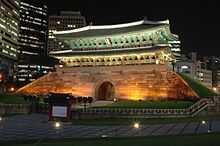
The traditional heart of Seoul is the old Joseon Dynasty city, now the downtown area, where most palaces, government offices, corporate headquarters, hotels, and traditional markets are located. Cheonggyecheon, a stream that runs from west to east through the valley before emptying into the Han River, was for many years covered with concrete, but was recently restored through an urban revival project in 2005. The most historically significant street in Seoul is Jongno, meaning "Bell Street," on which one can find Bosingak, a pavilion containing a large bell. The bell signaled the different times of the day and therefore controlled the four major gates to the city. The only time it is usually rung now is at midnight on New Year's Eve, when it is rung thirty-three times. It was, however, rung on the day that President Kim Dae-jung took office. To the north of downtown is Bukhan Mountain, and to the south is the smaller Namsan. Further south are the old suburbs of Yongsan District and Mapo District. Across the Han River are the newer and wealthier areas of Gangnam District, Seocho District and surrounding neighborhoods.
Historical architecture
Seoul has many historical and cultural landmarks. In Amsa-dong Prehistoric Settlement Site, Gangdong District, neolithic remains were excavated and accidentally discovered by a flood in 1925.
Urban and civil planning was a key concept when Seoul was first designed to serve as a capital in the late 14th century. The Joseon Dynasty built "Five Grand Palaces" in Seoul: Changdeokgung, Changgyeonggung, Deoksugung, Gyeongbokgung and Gyeonghuigung, all of which are located in the district of Jongno District and Jung District. Among them, Changdeokgung was added to the UNESCO World Heritage List in 1997 as an "outstanding example of Far Eastern palace architecture and garden design". The main palace, Gyeongbokgung, is currently being restored to its original form. The palaces are considered exemplary architecture of the Joseon period. Beside the palaces, Unhyeongung is known for being the royal residence of Regent Daewongun, the father of Emperor Gojong at the end of the Joseon Dynasty.
Seoul has been surrounded by walls that were built to regulate visitors from other regions and protect the city in case of invasion. Pungnap Toseong is a flat earthen wall built at the edge of the Han River which is widely believed to be the site of Wiryeseong. Mongchon Toseong (몽촌토성; 蒙村土城) is another earthen wall built during the Baekje period which is now located inside the Olympic Park. The Fortress Wall of Seoul was built early in the Joseon Dynasty for protection of the city. After many centuries of destruction and rebuilding, approximately 2/3 of the wall remains, as well as six of the original eight gates. These gates include Sungnyemun and Heunginjimun, commonly known as Namdaemun (South Great Gate) and Dongdaemun (East Great Gate). Namdaemun was the oldest wooden gate until a 2008 arson attack, and is currently undergoing reconstruction. Situated near the gates are the traditional markets and largest shopping center, Namdaemun Market and Dongdaemun Market.
There are also many buildings constructed with international styles in the late-19th and early-20th centuries. The Independence Gate was built in 1897 to inspire an independent spirit. Seoul Station was opened in 1900 as Gyeongseong Station.
Modern architecture

Major modern landmarks in Seoul include the Three International Finance Center, N Seoul Tower, the World Trade Center and the seven-skyscraper residence Tower Palace. These and various high-rise office buildings, like the Gangnam Finance Center and Jongno Tower, dominate the city's skyline. Due to its high density, Seoul has a vast array of skyscrapers; the city council is now planning a series of new highrises, including a 640-meter business center in Sangam Digital Media City district and the 523-meter Lotte World 2 Tower in the Jamsil district of Songpa District and Gangdong District. As of Jan 2013, the tallest building in the city was the 285m Three International Finance Center.
The World Trade Center of Korea, located in Gangnam District, hosts various expositions and conferences. Also in Gangnam District is the COEX Mall, a large indoor shopping and entertainment complex. Downstream from Gangnam District is Yeouido, an island that is home to the National Assembly, major broadcasting studios, and a number of large office buildings, as well as the Korea Finance Building and the world's largest Pentecostal church. The Olympic Stadium, Olympic Park, and Lotte World are located in Songpa District, on the south side of the Han River, upstream from Gangnam District.
In recognition of all the notable recent buildings erected in the city, in 2010 Seoul was designated the World Design Capital for the year. Also, two new modern landmarks of Seoul are Dongdaemun Design Plaza & Park, designed by Zaha Hadid, and the new wave-shaped Seoul City Hall, by Yoo Kerl of iArc.
Culture
Museums
Seoul is home to over 100 museums, including three national and nine official municipal museums. The National Museum of Korea is the most representative of museums in not only Seoul but all of South Korea. Since its establishment in 1945, the museum has built a collection of 150,000 artifacts. In October 2005, the museum moved to a new building in Yongsan Family Park. The National Folk Museum is situated on the grounds of the Gyeongbokgung Palace in the district of Jongno District and uses replicas of historical objects to illustrate the folk history of the Korean people. Bukchon Hanok Village and Namsangol Hanok Village are old residential districts consisting of hanok Korean traditional houses, parks, and museums that allows visitors to experience traditional Korean culture. The War Memorial, one of nine municipal museums in Seoul, offers visitors an educational and emotional experience of various wars in which Korea was involved, including Korean War themes. The Seodaemun Prison is a former prison built during the Japanese occupation, and is currently used as a history museum.
The Seoul Museum of Art and Ilmin Museum of Art have preserved the appearance of the old building that is visually unique from the neighboring tall, modern buildings. The former is operated by Seoul City Council and sits adjacent to Gyeonghuigung Palace, a Joseon dynasty royal palace. For many Korean film lovers from all over the world, the Korean Film Archive is running the Korean Film Museum and Cinematheque KOFA in its main center located in Digital Media City(DMC), Sangam-dong. The Tteok & Kitchen Utensil Museum and Kimchi Field Museum provide information regarding Korean culinary history.
Religious monuments
There are also religious buildings that take important roles in Korean society and politics. The Wongudan altar was a sacrificial place where Korean rulers held heavenly rituals since the Three Kingdoms period. Since the Joseon Dynasty adopted Confucianism as its national ideology in the 14th century, the state built many Confucian shrines. The descendants of the Joseon royal family still continue to hold ceremonies to commemorate ancestors at Jongmyo. It is the oldest royal Confucian shrine preserved and the ritual ceremonies continue a tradition established in the 14th century. Munmyo and Dongmyo were built during the same period. Although Buddhism was suppressed by the Joseon state, it has continued its existence. Jogyesa is the headquarters of the Jogye Order of Korean Buddhism. Hwagyesa and Bongeunsa are also major Buddhist temples in Seoul.
The Myeongdong Cathedral is a landmark of the Myeongdong, Jung District and the biggest Catholic church established in 1883. It is a symbol of Catholicism in Korea. It was also a focus for political dissent in the 1980s. In this way the Roman Catholic Church has a very strong influence in Korean society.
There are many Protestant churches in Seoul. The most numerous are Presbyterian, but there are also many Methodist, Baptist, and Lutheran churches.
Festivals
In October 2012 KBS Hall in Seoul hosted major international music festivals – First ABU TV and Radio Song Festivals within frameworks of Asia-Pacific Broadcasting Union 49th General Assembly.[58][59] Hi! Seoul Festival is a seasonal cultural festival held four times a year every spring, summer, autumn, and winter in Seoul, South Korea since 2003. It is based on the "Seoul Citizens' Day" held on every October since 1994 to commemorate the 600 years history of Seoul as the capital of the country. The festival is arranged under the Seoul Metropolitan Government.
Parks
Namsan Park offers hiking, recreation and views of the downtown Seoul skyline. The N Seoul Tower is located here. Seoul Olympic Park is located in Songpa District and was built to host the 1988 Summer Olympics. The Wongaksa Pagoda 10 tier pagoda is situated In Tapgol Park, a small public park with an area of 19,599 m2 (210,962 sq ft). Areas around streams serve as public places for relaxation and recreation. Tancheon stream and the nearby area serve as a large park with paths for both walkers and cyclists. Cheonggyecheon, a stream that runs nearly 6 km (4 mi) through downtown Seoul, is popular among both Seoul residents and tourists. The Seoul metropolitan area accommodates six major parks, including the Seoul Forest, which opened in mid-2005. The Seoul National Capital Area also contains a green belt aimed at preventing the city from sprawling out into neighboring Gyeonggi Province. These areas are frequently sought after by people looking to escape from urban life on weekends and during vacations.
Seoul is also home to the world's largest indoor amusement park, Lotte World. Other recreation centers include the former Olympic and World Cup stadiums and the City Hall public lawn.
Sports
International competition
Seoul hosted the 1986 Asian Games commonly known as Asiad, 1988 Olympic Games and Paralympic Games. It also served as one of the host cities of the 2002 FIFA World Cup. Sangam Stadium hosted the opening ceremony and first game of the tournament.
Taekwondo is Korea's national sport and Seoul is the location of the Kukkiwon, the world headquarters of taekwondo, as well as the World Taekwondo Federation (-).
Domestic sports clubs
Football
- Men's football
| Tier | League | Club | Home stadium |
|---|---|---|---|
| Top | K League Classic | FC Seoul | Seoul World Cup Stadium |
| 4th | Challengers League | Seoul United | Madeul Stadium |
| Seoul FC Martyrs | Gangbuk Public Stadium | ||
| Jungnang Chorus Mustang | Jungnang Public Ground |
- Women's football
| Tier | League | Club | Home stadium |
|---|---|---|---|
| Top | WK-League | Seoul City Women's FC | To be determined |
Baseball
Seoul has three professional baseball teams under the KBO: One of oldest clubs, Doosan Bears, LG Twins and Nexen Heroes.
Basketball
Transportation

Seoul features one of the world's most advanced transportation infrastructures that is constantly under expansion. Its system dates back to the era of the Korean Empire, when the first streetcar lines were laid and a railroad linking Seoul and Incheon was completed. Seoul's most important streetcar line ran along Jongno until it was replaced by Line 1 of the subway system in the early 1970s. Other notable streets in downtown Seoul include Euljiro, Teheranno, Sejongno, Chungmuro, Yulgongno, and Toegyero. There are nine major subway lines stretching for more than 250 km (155 mi), with one additional line planned. As of 2010, 25% of the population has a commute time of an hour or more.
Bus

Seoul's bus system is operated by the Seoul Metropolitan Government, with four primary bus configurations available servicing most of the city. Seoul has many large intercity/express bus terminals. These buses connect Seoul with cities throughout South Korea. The Seoul Express Bus Terminal, Central City Terminal and Seoul Nambu Terminal are located in the district of Seocho District. In addition, East Seoul Bus Terminal in Gwangjin District and Sangbong Terminal in Jungnang District operate in the east of the city. To reduce air pollution in the metropolitan area, the municipal government is planning to convert over seven thousand of Seoul's diesel engine buses to natural gas by 2010.[60]
Subway
Seoul has a comprehensive subway network that interconnects every district of the city and the surrounding areas. With more than 8 million passengers per day, Seoul has the busiest subway system in the world. The Seoul Metropolitan Subway has 19 total lines which serve Seoul, Incheon, Gyeonggi province, western Gangwon province, and northern Chungnam province. In addition, in order to cope with the various modes of transport, Seoul's metropolitan government employs several mathematicians to coordinate the subway, bus, and traffic schedules into one timetable. The various lines are run by Korail, Seoul Metro, Seoul Metropolitan Rapid Transit Corporation, NeoTrans Co., AREX, and Seoul Metro Line 9 Corporation.
Train
Seoul is connected to every major city in Korea by rail. Seoul is also linked to most major Korean cities by the KTX high-speed train, which has a normal operation speed of more than 300 km/h (186 mph). Major railroad stations include:
- Seoul Station, Yongsan District: Gyeongbu line (KTX/Saemaul/Mugunghwa-ho), Gyeongui line (Saemaul/Commuter)
- Yongsan Station, Yongsan District: Honam line (KTX/Saemaul/Mugunghwa), Jeolla/Janghang lines (Saemaul/Mugunghwa)
- Yeongdeungpo Station, Yeongdeungpo District: Gyeongbu/Honam/Janghang lines (Saemaul/Mugunghwa)
- Cheongnyangni Station, Dongdaemun District: Gyeongchun/Jungang/Yeongdong/Taebaek lines (Mugunghwa)
Airports
Two international airports serve Seoul. Gimpo International Airport, formerly in Gimpo but annexed to Seoul in 1963, was for many years (since its original construction during the Korean War) the only international airport serving Seoul. Other domestic airports were also built around the time of the war, including Yeouido.
When it opened in March 2001, Incheon International Airport on Yeongjong island in Incheon changed the role of Gimpo Airport significantly. Incheon is now responsible for almost all international flights and some domestic flights, while Gimpo serves only domestic flights with the exception of flights to Haneda Airport in Tokyo, Osaka Kansai International Airport, Taipei Songshan Airport in Taipei, Hongqiao Airport in Shanghai, and Beijing Capital International Airport in Beijing. This has led to a significant drop in flights from Gimpo Airport, though it remains one of South Korea's busiest airports.
Meanwhile, Incheon International Airport has become, along with Hong Kong, a major transportation center for East Asia.
Incheon and Gimpo are linked to Seoul by highways, and to each other by the Incheon International Airport Railroad, which is also linked to Incheon line #1. Gimpo is also linked by subway (line No. 5 and #9). The Incheon International Airport Railroad, connecting the airport directly to Seoul Station in central Seoul, was recently opened. Shuttle buses also transfer passengers between Incheon and Gimpo airports.
Education
- See also: Education in South Korea, List of universities in Seoul
Universities
Seoul is home to the majority of South Korea's most prestigious universities, including University of Seoul, Korea University, Yonsei University, Chung-Ang University, Dongguk University, Ewha Womans University, Hankuk University of Foreign Studies, Hanyang University, Hongik University, Kookmin University, Konkuk University, Kyung Hee University, Sejong University, Seoul National University, Seoul National University of Education, Sogang University, Soongsil University, and Sungkyunkwan University. Sookmyung Women's University
Secondary education
Education from grades 1–10 is compulsory. Students spend six years in elementary school, three years in middle school, and three years in high school. Secondary schools generally require that the students wear uniforms. There is no exit exam for graduating from high school, but many students proceeding to the university level are required to take the College Scholastic Ability Test that is held every November.
Seoul is home to various specialized schools, including three science high schools (Hansung Science High School, Sejong Science High School and Seoul Science High School), and six foreign language high schools (Daewon Foreign Language High School, Daeil Foreign Language High School, Ewha Girls' Foreign Language High School, Hanyoung Foreign Language High School, Myungduk Foreign Language High School and Seoul Foreign Language High School). Seoul Metropolitan Office of Education comprises 235 college-preparatory high schools, 80 vocational schools, 377 middle schools, and 33 special education schools as of 2009.
International relations
Seoul is a member of the Asian Network of Major Cities 21 and the C40 Cities Climate Leadership Group.



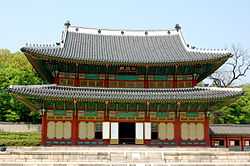
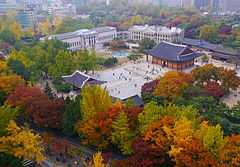

.jpg)
